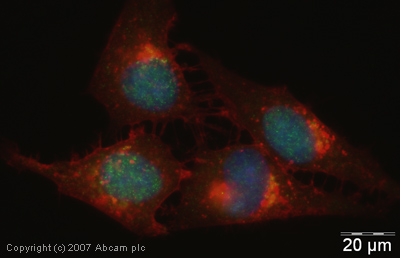Anti-FBXL11 antibody - ChIP Grade
| Name | Anti-FBXL11 antibody - ChIP Grade |
|---|---|
| Supplier | Abcam |
| Catalog | ab31739 |
| Prices | $387.00 |
| Sizes | 100 µg |
| Host | Rabbit |
| Clonality | Polyclonal |
| Isotype | IgG |
| Applications | WB ICC/IF ICC/IF IHC-P ChIP IP |
| Species Reactivities | Human, Mouse |
| Antigen | Synthetic peptide conjugated to KLH derived from within residues 1 - 100 of Human FBXL11 |
| Description | Rabbit Polyclonal |
| Gene | KDM2A |
| Conjugate | Unconjugated |
| Supplier Page | Shop |
Product images
Product References
Depletion of histone demethylase KDM2A enhanced the adipogenic and chondrogenic - Depletion of histone demethylase KDM2A enhanced the adipogenic and chondrogenic
Dong R, Yao R, Du J, Wang S, Fan Z. Exp Cell Res. 2013 Nov 1;319(18):2874-82.
Nucleosome-interacting proteins regulated by DNA and histone methylation. - Nucleosome-interacting proteins regulated by DNA and histone methylation.
Bartke T, Vermeulen M, Xhemalce B, Robson SC, Mann M, Kouzarides T. Cell. 2010 Oct 29;143(3):470-84.


